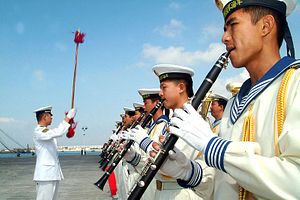Hubris is a prime mover in human affairs. Those who yield to overweening pride hear what they want to hear. Herodotus, the father crazy uncle of history, relates how King Croesus of Lydia consulted the oracle at Delphi to determine whether to wage preemptive war against a rising Persia ruled by Cyrus the Great. The oracle’s reply: you will destroy a great empire if you march against Persia. Whereupon the doughty king led his army onto the battlefield…
…and lost everything in combat.
The empire destroyed was Croesus’ own. Lesson #1: Think twice before tangling with an enemy nicknamed The Great. Lesson #2: Nemesis requites hubris. Just ask any classical Greek historian, philosopher or playwright about punishment meted out by Fate. Pride goeth before a fall. Lesson #3: Beware of oracles. Better to heed the hardscrabble counsel of a Machiavelli. The Florentine philosopher admits that “fortune is the arbiter of half our actions.” We’re the arbiters of the other half. Those cursed with ill fortune can escape it through wisdom and resolve. Those who enjoy fortune’s favor can squander it.
China’s leadership appears prone to hubris. Whether that failing is mostly a Chinese thing, or a communist thing, or a Chinese Communist thing, is open to debate. Whatever the case, a parable of China’s inexorable rise appears to beguile folk in Beijing and other power centers. History, they believe, is on China’s side. It’s their oracle. For evidence of hubris, check out Reuters reporter David Lague’s story from last Wednesday. (David quotes — sniff, sniff — only the most eminent of sources. Call me Croesus of Newport.) The story details how China’s navy has commenced operating on the Western Pacific high seas. Task forces exit and reenter the China seas through straits offering passage through the Japanese archipelago.
A weird triumphalism courses through sea-power pundits’ words. The PLA Navy has scored a “breakthrough.” Its task forces have “fragmented” and “dismembered” the first island chain, which is “no longer existent.” Their cruises put Tokyo and Washington on notice that they can no longer “contain China within the first island chain.” The results of the 1894-1895 Sino-Japanese War — when the Imperial Japanese Navy thrashed its Chinese counterpart, wresting Taiwan and a big wad of cash from the Qing Dynasty — have been overturned. Take that, imperialist aggressors!!
Yet reports of Chinese naval mastery are greatly exaggerated. PLA Navy mariners have proved that they can … navigate through straits traversed by merchantmen and warships as a matter of routine. They have resolutely … operated a few hundred miles offshore for a short time. They have accomplished these great feats … unopposed. Yawn.
This hardly amounts to ruling the waves. Indeed, nothing China’s navy has done demonstrates that it can force the straits open should the U.S.-Japan alliance decide to close them. Shore-based anti-ship missiles already in the Japan Self-Defense Force inventory sport the range and accuracy to give any adversary a very bad day. Commentators such as myself and Toshi Yoshihara, T. X. Hammes, and a team of johnny-come-latelies from RAND have been urging the JSDF to expand its missile capacity. This remains a critical niche advantage for Japan over China, and one for which the PLA has no obvious answer.
You have to wonder whether Asians’ famed geographic consciousness, usually an asset to strategic thought, isn’t working against dispassionate appraisals of China’s high-seas progress. Observers on both sides of the Yellow Sea have taken to plotting the tracks Chinese task forces follow through the Miyako Strait and other passages, into the Western Pacific, and back home. Japanese maps depicting Chinese cruises show paths that look like ramen noodles spilling out into the Western Pacific. Or, applying a more sinister interpretation, they look like cables encircling and binding parts of the archipelago.
Sea-story time. There I was: as a junior officer I once acted as tactical plotter for a destroyer-squadron staff masterminding a wargame in the Baltic Sea. It was fun. I used colored pencils to plot position reports for friendly and adversary units every so often, then connected the dots to track their movements. When you look at such a map afterward, it does indeed look as though ships crowded every inch of waterspace in the battle zone. But that’s an optical fiction. Corbett reminds us that an uncommanded sea is the norm. Absolute sea control is illusory. No navy boasts enough ships, aircraft, and armaments to fill up a contested expanse, driving off an enemy’s flag forever.
No navy, then, can “encircle” a long, distended archipelago like Japan in any meaningful sense. Think back to grade-school math class. A track on the nautical chart is a line composed of an infinite number of infinitesimal points. A ship is only one of those points at any given time, lost in the vast emptiness of the ocean. And even if these pathways held some meaning, they would constitute a thin defense perimeter. It would be a simple matter for any defender to concentrate superior force at one point along the line — punching through this fragile barrier.
When asked about Chinese plans for naval bases in the Indian Ocean, some wits in India like to say a string of pearls makes an ineffective murder weapon when playing Clue. There’s strategic wisdom in that joke. Japanese commentators should take it to heart — and settle down about the PLA Navy’s rather modest achievements. For their part, Chinese maritime advocates should resist being taken in by their own hype. Oracular pronouncements have a way of returning to haunt those who act on them.
Just ask King Croesus.

































